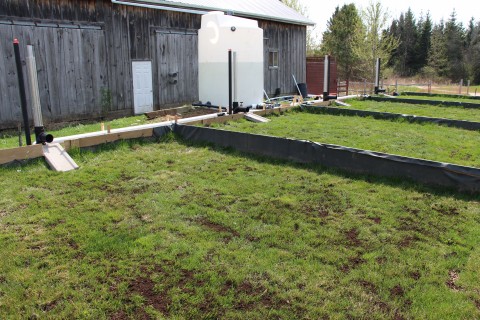Soil Treatments for Urban Runoff Management on Residential Properties
This project evaluates the runoff reduction, water quality and functional benefits of different soil treatments for residential lawns. The study site at The Living City Campus (LCC) in Vaughan was designed and constructed to mimic a typical front yard in a new medium density residential subdivision in Newmarket, Ontario, which is being evaluated as part of a separate project. The site consists of four soil plots, each of which receives direct rainfall and runoff from a sloped metal roof. The sodded plots are similar in size to the front lawns in the Newmarket subdivision and top soil used to construct the soil plots was transported from stockpiles at the Newmarket site when the area was being stripped and graded for construction. Runoff from the roof of an adjacent barn at the LCC drains to a large cistern, where roof drainage is apportioned equally among the four plots. The ratio of the roof drainage area to plot size is similar to that of a typical front yard in the Newmarket subdivision.
The experimental soil plots were designed to evaluate feasible alternatives to standard topsoil management practice in new residential developments. All plots were sodded with the same grass type from the same source, and include:
- 10 centimeters of topsoil
- 30 centimeters of topsoil
- 30 centimeters of topsoil mixed with organic rich compost
- 25 centimeters of topsoil with a 5 cm compost blanket
Currently roof water is delivered to the lawns at the upstream end of the plots via a splash pad, which is standard practice in most new developments. Alternative methods of delivering roof water to the lawns will be evaluated in future trials.
The soil plots were constructed and instrumented in April 2015.

